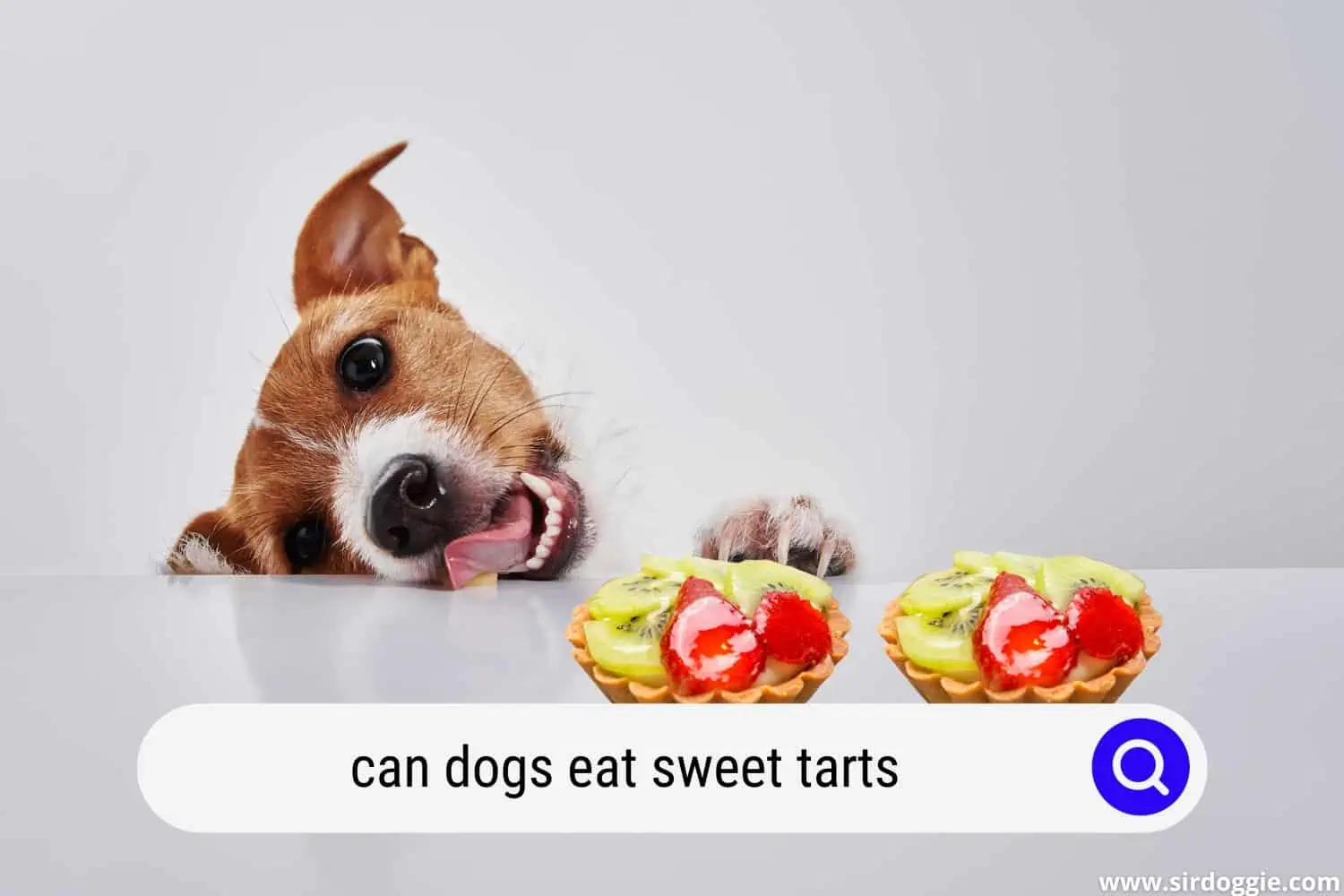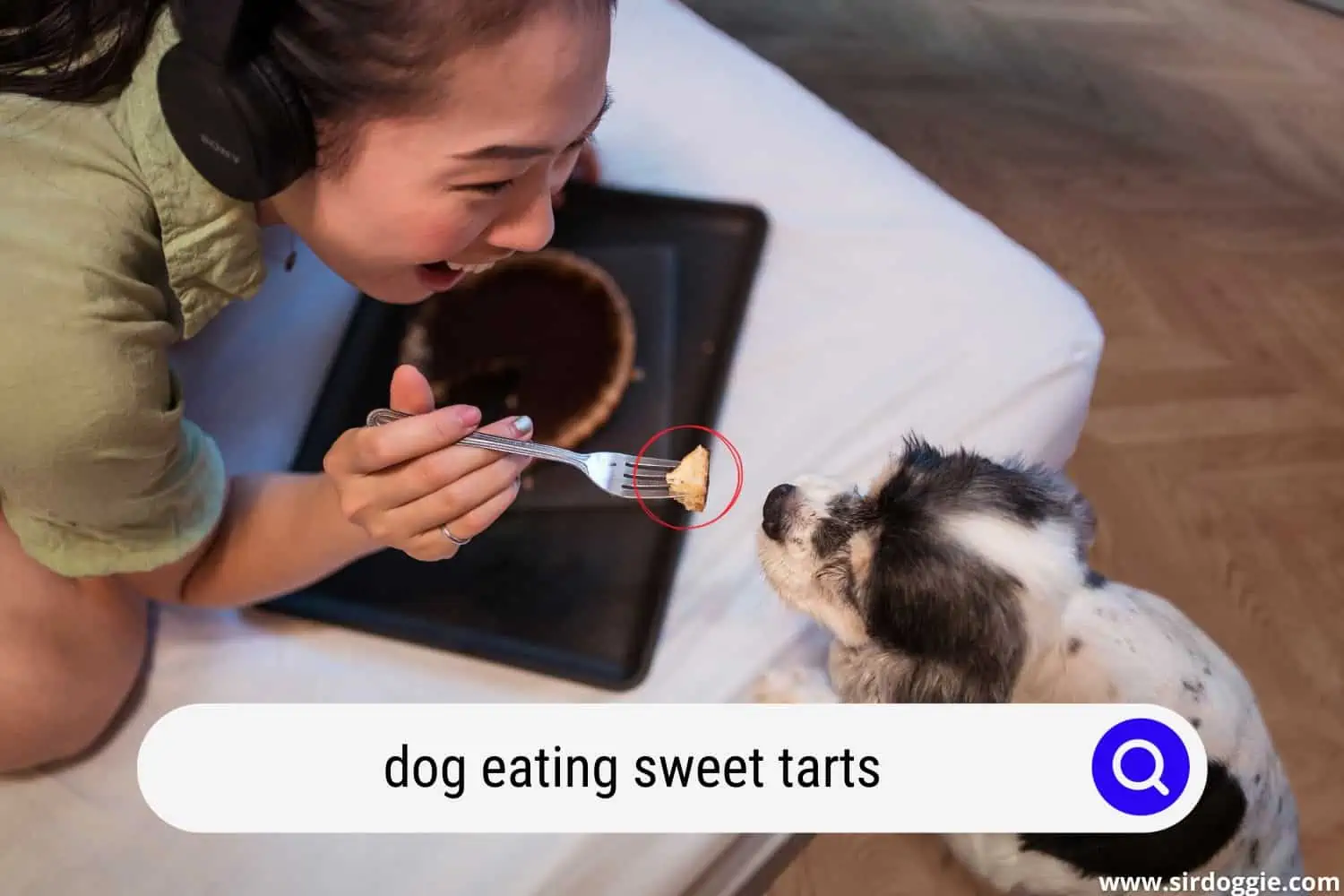Can Dogs Eat Sweet Tarts? Read This First!
Sometimes, when we’re not looking, our big fur babies get into all sorts of things they shouldn’t. Food takes first place here, where sweets, treats, candies, and baked goods don’t stand a chance of lasting. Oftentimes, these things aren’t good for dogs to eat and it can make them very sick.
One of the most common candies is sweet tarts. So, can dogs eat these delicious candies? No, they shouldn’t eat them. Certainly, they “can” eat them, but that doesn’t mean they should.

Why Shouldn’t Dogs Eat Sweet Tarts?
If you look at the package for sweet tarts and read the nutritional information, this candy is not at all ideal for a dog to consume, let alone a human. These things come packed with three grams of artificial sugar per 15-gram serving.
Sweet tarts have a plethora of chemicals, fillers, and false coloring agents. None of which is good or healthy for anyone, including yourself and especially not your dog. Plus, the manufacturer, Ferrara Candy Company, isn’t very forthcoming about what they mean by “Artificial Flavoring.”
What to Do if the Dog Eats Too Many?
If your dog consumes a few pieces to a handful of sweet tarts, it shouldn’t create too much of a health concern. They might get hyper or may even vomit. Other than that, they’ll survive. But, if they eat more than half a bag, then you should take your furry friend to the vet to be on the safe side.
If you’re unsure how much the dog ate, then observe the dog for the next few hours. If the poor thing is nauseous and vomiting consistently, take it to the emergency clinic right away. But, if the vomiting happens only once, then the vet’s office shouldn’t be necessary.
Regardless of the amount consumed, make sure the dog drinks plenty of fresh, clean water. If it’s sick, it may not want to play or go for a walk, but giving it some fresh air may help. This will be especially true in the case of vomiting.
What Other Candies Are Dangerous for Dogs?
Almost all candies are not a good idea for dogs to eat. Artificial sweeteners are the worst and all candy has things like high-fructose corn syrup and xylitol.
The ASPCA’s list of the top 13 foods dogs shouldn’t eat indicates chocolate and xylitol as some of the worst. This is because most sweets will induce an insulin response, which can bring on diabetes and other digestive problems.
Chocolate
Comprising substances like theobromine, caffeine, and methylxanthines, chocolate can be very toxic to your dog. This is because your pooch will process these slowly and, as such, will build up poison over time. This will make the dog sick and stimulated at once.
When ingested, the dog can have excessive panting, thirst, and urination along with hyperactivity, abnormal heartbeat, tremors, seizures, vomiting, diarrhea, and even death. Dark chocolate is the most dangerous of all chocolate available. As a general rule, white chocolate will have fewer harmful substances than baking chocolate, which has the highest.
Of course, if the dog only eats a little bit, it should be fine. But huge amounts will warrant a trip to the emergency vet. Even if you’re unsure of the amount, you should at least schedule an appointment with the doggie doctor.
Xylitol’s Toxicity in Dogs
Xylitol, an artificial chemical sweetener, can cause serious toxicity issues for your dog. It can cause liver injury and induce low blood sugar due to a rushed insulin release. In cases of low blood sugar, they will show symptoms like weakness, unsteadiness, shakiness, and seizures. These can appear a mere 30 minutes to as long as 12 hours after ingesting.
Liver injury will include symptoms like lethargy, jaundice, vomiting, decreased appetite, and diarrhea. What’s concerning about this is that you won’t see these signs until two or three days after ingestion. So, it’s wise to know exactly how much xylitol your dog ate.
Products with Xylitol
What’s more, xylitol is in many goods, foods, and other consumables intended for humans. Gum and candy are the most common, but it’s also contained in medications, vitamins, toothpaste, diapers, mouthwash, makeup, breath fresheners, sunscreen, baby wipes, lip balm, and dental floss.
There are other possibilities too like pudding, pancake syrup, ketchup, barbecue sauce, drinking powders, and other store-bought baked items. As you can see, it’s imperative to keep products containing xylitol out of the reach, view, and smell of your dog.
Are There Any Sweet Treats Safe for Dogs to Eat?
Any human sweet treat, including baked goods, is not safe for a dog to eat. You really should avoid giving your fur baby anything that could compromise its system. So, it’s best to keep all that kind of food up and out of the way of the dog’s view, reach, and smelling capacity.
All that said, there are treats with some sweetness that you can give to your dog. But, you should make sure that these never exceed 10% of their daily food intake. Most of your dog’s nutrition should come from a well-balanced and highly nutritious kibble.
Here’s a list of sweet foods your dog can have as a treat:
- Apples (dried or fresh)
- Bananas (dried or fresh)
- Blackberries
- Blueberries
- Carrots
- Cherries
- Green Beans
- Organic Peanut Butter (without GMOs, added sugar and preservatives)
- Pumpkin (unsweetened and without spices)
- Raspberries
- Strawberries
- Sweet Potatoes
- Yogurt
How Do I Protect My Dog from Eating Candy?
If your dog has a consummate sweet tooth, it’s imperative to keep all sugary treats out of paw’s reach. It may be best to not bring that kind of food into the house, especially if you have a mischievous puppy that gets into everything. But there are some tips you can follow to help keep your dog safe.
When you purchase something at the store, always check the ingredient labels for things like high-fructose corn syrup, xylitol, and chocolate. If you don’t know what the ingredient is, don’t give it to the dog or assume the product is okay for the dog to eat.
Also, keep purses, bags, lunch boxes and etc off the floor. This will reduce the dog’s proclivity for nosiness to find out what’s inside. In the event you have to take some medicine containing xylitol, do so in a room with a door. This way, you’ll be able to pick something that drops onto the floor before the dog does.

Final Thoughts
Of course, it’s always tempting to give your dog something super sweet to eat. After all, we humans like them and they’re delicious. But, unfortunately, many substances are harmful to our furry friends and we have to be mindful of what they consume. Sweet tarts are one such food that no dog should have at any time, for any reason.
However, there are some pooches that just can’t help themselves when things like sweet tarts come into the room. In these situations, it may be better to not bring candies and baked goods into the home at all. If the dog happens to have only a few nibbles, it’s nothing to panic over but you don’t want it to become a habit.

Family Dog Expert Author
Hi there! I’m Stuart, a devoted dog lover and family dog expert with over a decade of experience working with our furry companions. My passion for dogs drives me to share my knowledge and expertise, helping families build strong, loving bonds with their four-legged friends. When I’m not writing for SirDoggie, you’ll find me hiking, playing with my beautiful dog, or studying music.